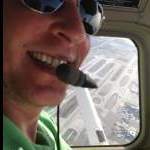Last 5 flights
-
Members Online
- Joe Linnebur
- 802flyer
- Rsmithref
- Dwb62
- LANCECASPER
- Marcopolo
- mooneydemi
- exM20K
- TraumaRN1018
- Neshi
- vorlon1
- Speed Merchant
- N201MKTurbo
- Flyler
- PaulM
- Sue Bon
- TerminalSpeed
- Peter T
- natdm
- Joseph Long
- Ron McBride
- 67 m20F chump
- Jake@BevanAviation
- jafffree
- 47U
- Rizvon
- Echo
- ap891
- JB2000
- takair
- laytonl
- buddy
- FlyingDude
- dzeleski
- jcolgan
- hubcap
- 00-Negative
- TCW3
- bryanjcp
- EKoS
- Shadrach
- Hank


Recommended Posts
Join the conversation
You can post now and register later. If you have an account, sign in now to post with your account.